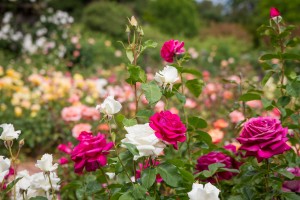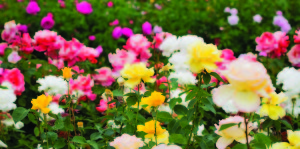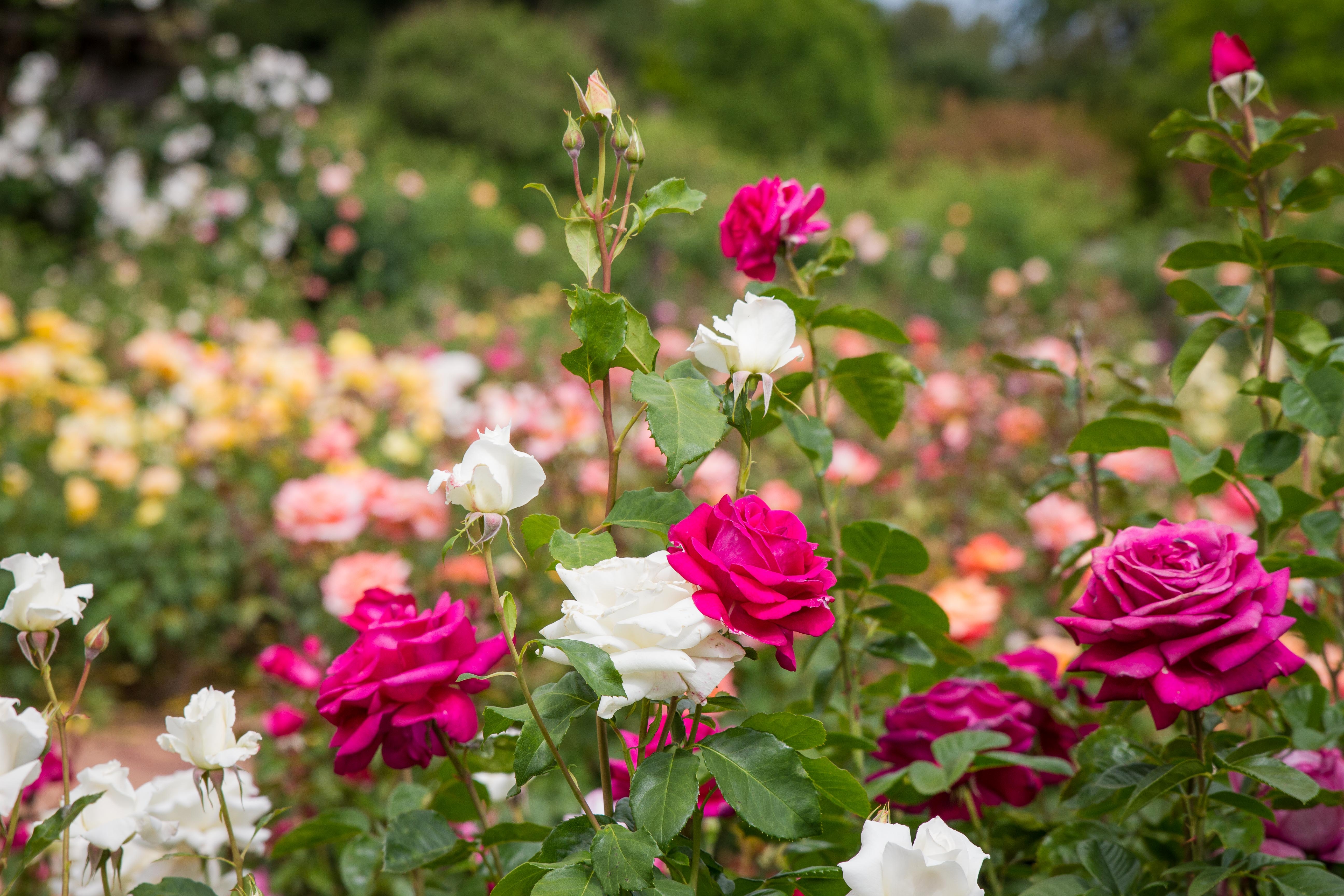
 By Brian Larsen
By Brian Larsen
I’m often asked how I keep The Gardens’ roses blooming like crazy all throughout the summer months. Well, it’s really no secret; the answer is simple and straight-forward. For maximum bloom, you’ve got to feed them — early and often.
Kicking off the menu in early March, I like to use a fertilizer dominant in nitrogen. As vegetative growth progresses, flower buds will start to develop. As soon as I see the majority of my roses stacking up buds, I introduce a heavy bloom fertilizer. To top it off and really keep them going, I highly recommend using a monthly bloom fertilizer application throughout the rest of the season.
However, in the garden as in life, sometimes a rich, three-course meal isn’t in the cards. For those who don’t have the time, energy or money to fertilize on a regular basis, I recommend feeding with a slow-release bloom food in late March and early September. Organics are an excellent choice for sustained release over the course of the season.
When shopping for your fertilizer, don’t worry about brands, as there isn’t much difference; the important choice to make is about form, either granular or liquid. I prefer liquid fertilizer due to lower cost and ease of application. However, I only recommend liquid if you are able to inject it directly into the irrigation, so it better targets the soil where your roses are rooted. Try to avoid spraying or pouring liquid fertilizer on top of your roses, as it can bring excess moisture to the leaf surface, leading to powdery mildew and other unwelcome issues. If you don’t have the ability to inject, go with the granular option instead.
Take this simple advice this season: Give your roses the right meal and be the envy of all who pass your garden.

